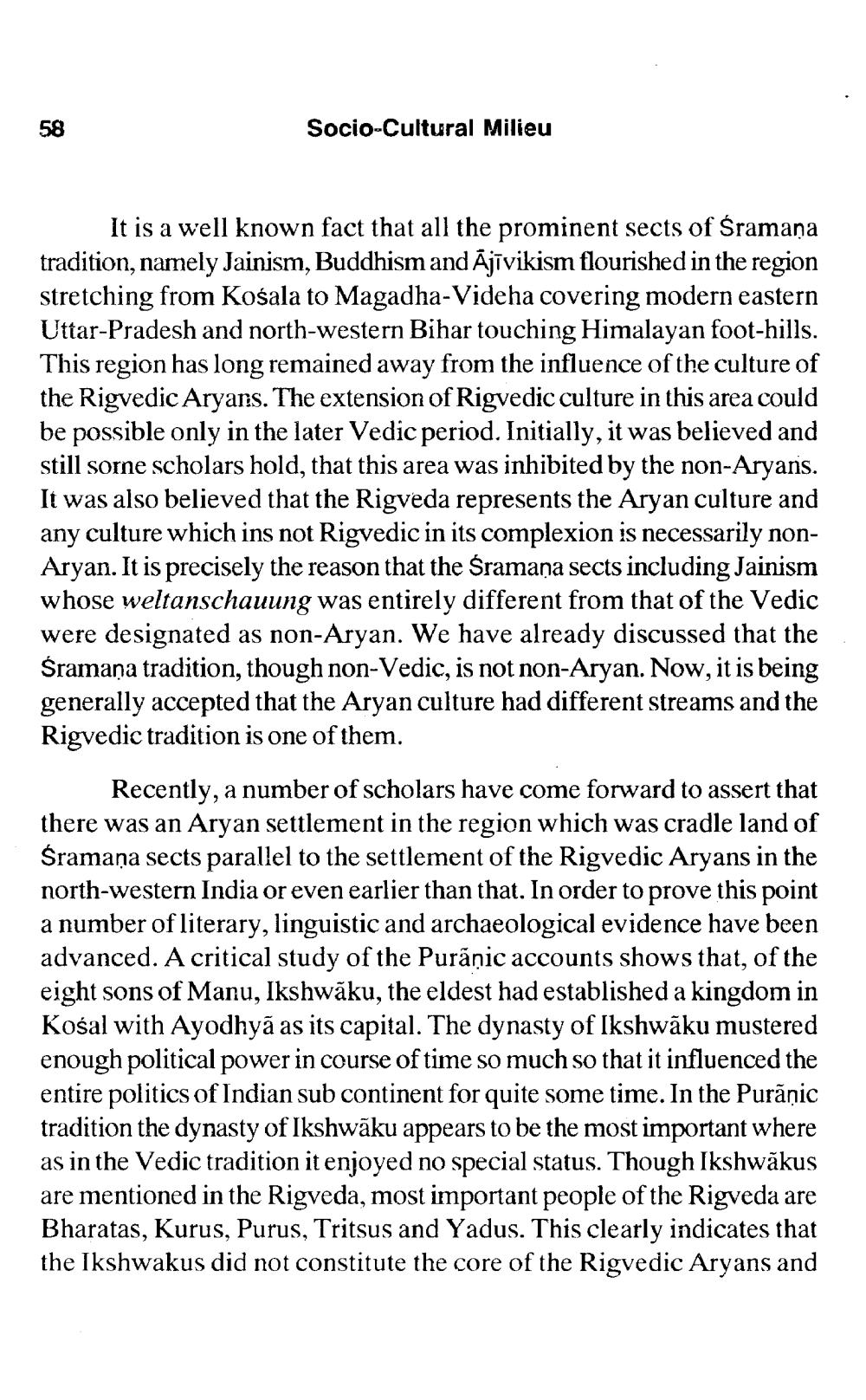________________
58
Socio-Cultural Milieu
It is a well known fact that all the prominent sects of Śramana tradition, namely Jainism, Buddhism and Ajīvikism flourished in the region stretching from Kośala to Magadha-Videha covering modern eastern Uttar-Pradesh and north-western Bihar touching Himalayan foot-hills. This region has long remained away from the influence of the culture of the Rigvedic Aryans. The extension of Rigvedic culture in this area could be possible only in the later Vedic period. Initially, it was believed and still sorne scholars hold, that this area was inhibited by the non-Aryans. It was also believed that the Rigveda represents the Aryan culture and any culture which ins not Rigvedic in its complexion is necessarily nonAryan. It is precisely the reason that the Śramaņa sects including Jainism whose weltanschauung was entirely different from that of the Vedic were designated as non-Aryan. We have already discussed that the Śramana tradition, though non-Vedic, is not non-Aryan. Now, it is being generally accepted that the Aryan culture had different streams and the Rigvedic tradition is one of them.
Recently, a number of scholars have come forward to assert that there was an Aryan settlement in the region which was cradle land of Śramaņa sects parallel to the settlement of the Rigvedic Aryans in the north-western India or even earlier than that. In order to prove this point a number of literary, linguistic and archaeological evidence have been advanced. A critical study of the Purāņic accounts shows that, of the eight sons of Manu, Ikshwāku, the eldest had established a kingdom in Kośal with Ayodhyā as its capital. The dynasty of Ikshwāku mustered enough political power in course of time so much so that it influenced the entire politics of Indian sub continent for quite some time. In the Purāņic tradition the dynasty of Ikshwāku appears to be the most important where as in the Vedic tradition it enjoyed no special status. Though Ikshwākus are mentioned in the Rigveda, most important people of the Rigveda are Bharatas, Kurus, Purus, Tritsus and Yadus. This clearly indicates that the Ikshwakus did not constitute the core of the Rigvedic Aryans and




